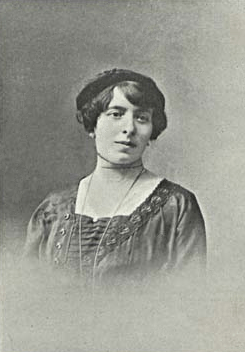Emília de Sousa Costa facts for kids
Quick facts for kids
Emília de Sousa Costa
|
|
|---|---|

Photo taken in 1914
|
|
| Born |
Emília da Piedade Teixeira Lopes
15 December 1877 Lamego, Viseu district, Portugal
|
| Died | 6 July 1959 (Aged 81) |
| Nationality | Portuguese |
| Other names | Emília da Piedade Teixeira Lopes de Sousa Costa |
| Occupation | Writer and teacher |
| Known for | Children’s literature |
Emília de Sousa Costa (1877 – 1959) was an important Portuguese teacher and writer. She worked hard to make sure girls could get a good education. Emília wrote many books for both grown-ups and children. She is known as one of the first people to write children's stories in Portuguese. She also translated famous fairy tales by the Brothers Grimm into Portuguese.
Contents
Emília's Early Life and Education
Emília da Piedade Teixeira Lopes de Sousa Costa was born in Lamego, a town in northern Portugal, on December 15, 1877. Her parents were Colonel Luís Maria Teixeira Lopes and Maria do Pilar Pinto Cardoso.
In 1904, Emília married a writer named Alberto de Sousa Costa. They had three children together. After they got married, they lived in Coimbra for a while. Then they moved to Lisbon, the capital city of Portugal, where they stayed until 1932. Later, they moved to Porto.
Emília de Sousa Costa believed strongly that girls should have the same chances as boys to go to school. She helped start a special fund called the Caixa de Auxílio aos Estudantes Pobres do Sexo Feminino. This fund helped poor girls get an education. She also taught at a place in Lisbon called the Tutoria Central. This place helped children who were in trouble or didn't have a home. Emília was also part of a group called the National Federation of Friends of Children.
Emília's Writing Career
For a long time, people mostly remembered Emília de Sousa Costa for her work in education. But recently, people have started to appreciate her writing more.
Emília was seen as a "moderate feminist." This means she believed women should be educated and free. She thought women could be modern and still be loving wives, mothers, and teachers. She wrote several books about women's roles and education, like The Woman at Home (1916) and Early Childhood Education (1923). She shared her ideas through her books and speeches. She didn't join feminist groups, but she still quietly disagreed with the government at the time, which was called the Estado Novo.
Emília de Sousa Costa was in charge of a series of children's books called the Biblioteca dos Pequeninos (Children's Library). Many of her own children's books were part of this series. A famous artist named Raquel Gameiro often drew the pictures for these books. When she translated the Grimms' Fairy Tales, she used a different name, Maria Valverde.
In 1925, Emília wrote a travel diary called Como eu vi o Brasil (As I saw Brazil). It was about a trip she took to Brazil in 1923. She also wrote a book of historical stories in 1935 called Lendas de Portugal. This book had 26 short stories about old Portuguese legends.
Later Years and Legacy
In her final years, Emília de Sousa Costa lived with her husband in a house in Porto. She passed away on July 6, 1959, at the age of 81.
Awards and Special Honours
Emília de Sousa Costa received an important award called the Military Order of Saint James of the Sword from Portugal.
In 2010, Portugal celebrated 100 years since it became a republic. To mark this, special postage stamps were made to honor women who made big contributions to women's rights in the early 1900s. One of these stamps was dedicated to Emília de Sousa Costa.
There is also a street named after her in São João da Pesqueira, a town in the Viseu district.
Books for Young Readers
Here are some of the books Emília de Sousa Costa wrote for children:
- 1927 Contos do Joãozinho
- 1927 O Perú Aviador (The Aviator Turkey)
- 1928 História do Menino Jesus (Story of the Child Jesus)
- 1928 Os Contos do Joãozinho (Joãozinho's Stories, part 2)
- 1930 História da Feialinda (Story of Feialinda)
- 1931 Contos dos meus netinhos (Stories for My Grandchildren)
- 1932 Joanito africanista (Little Johnny the Africanist)
- 1933 Quem tiver filhas no Mundo (Whoever Has Daughters in the World)
- 1933 No Reino do Sol (In the Kingdom of the Sun)
- 1933 Tagaté - Ás do Futebol (Tagaté - Football Ace)
- 1934 Triste Vida a da Raposa (The Sad Life of the Fox)
- 1938 Mestre Burro em Calças Pardas (Master Donkey in Brown Pants)
- 1950 Joanito Africanista (Little Johnny the Africanist)
See also
 In Spanish: Emília de Sousa Costa para niños
In Spanish: Emília de Sousa Costa para niños

